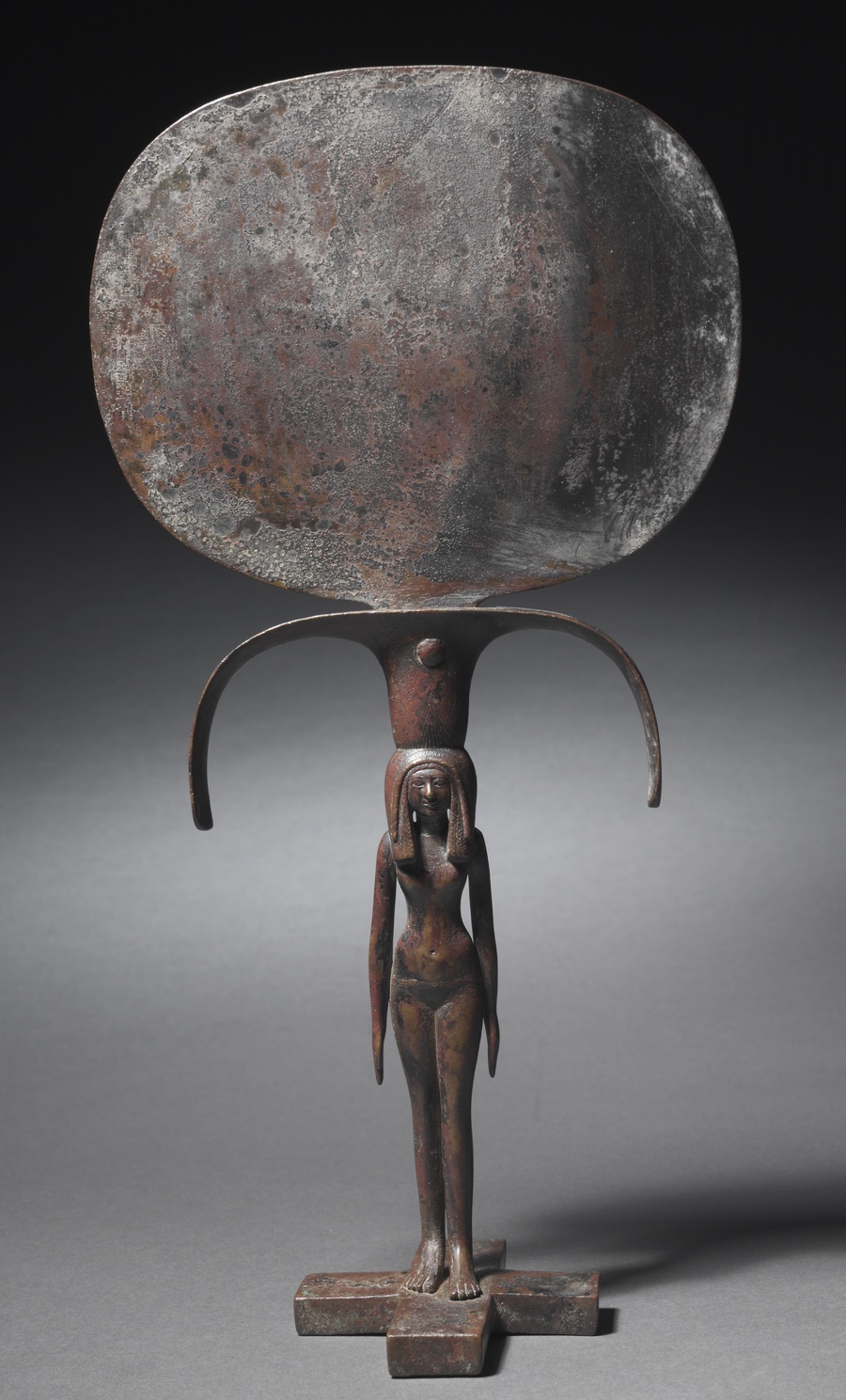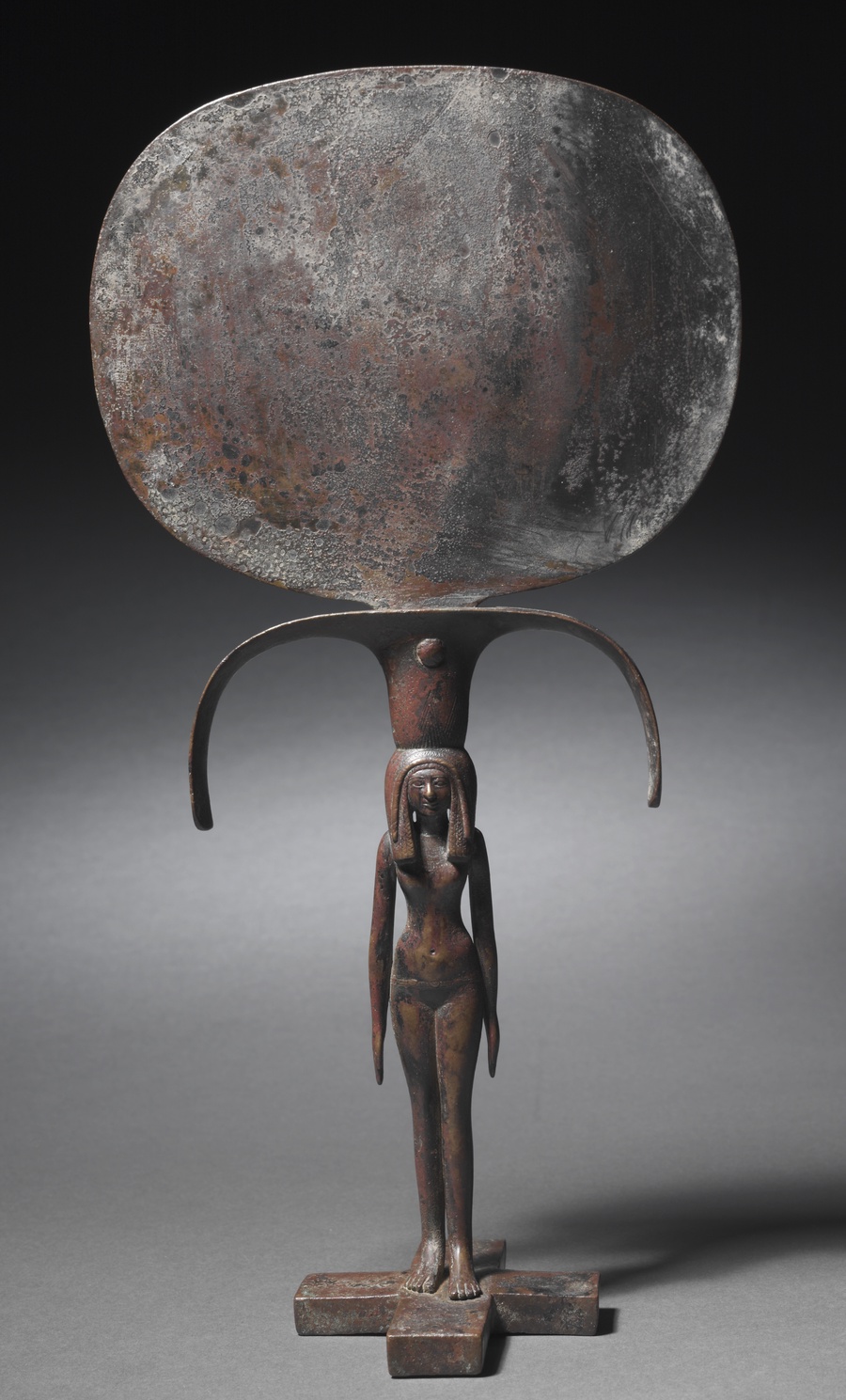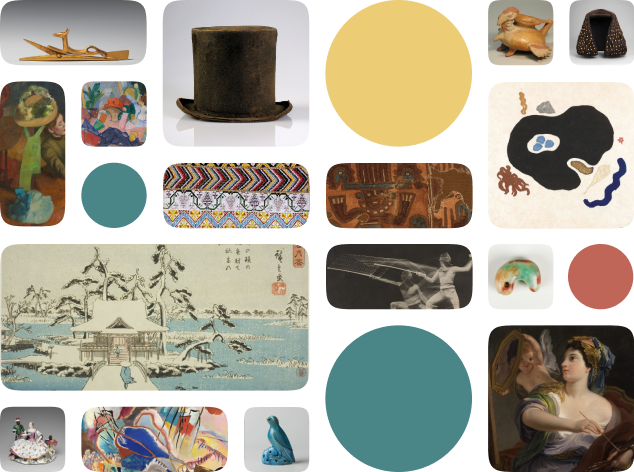About the work
The production of mirrors in Egypt dates back to the Old Kingdom. Mirrors were made from polished metals such as silver, gold, and copper. This particular style has a handle shaped like a woman. The style is emblematic of mirrors made in New Kingdom dynasties.
The woman wears a tripartite hairstyle and a girdle, both icons associated with the goddess Hathor. The flaring stems jutting from the top of her head resemble the papyrus plant. Papyrus stems were used in the production of everyday objects. Its image frequently appears on protective amulets and in burials. The rounded disk at the head of the tool symbolizes the sun and creation.
The woman wears a tripartite hairstyle and a girdle, both icons associated with the goddess Hathor. The flaring stems jutting from the top of her head resemble the papyrus plant. Papyrus stems were used in the production of everyday objects. Its image frequently appears on protective amulets and in burials. The rounded disk at the head of the tool symbolizes the sun and creation.
Cleveland Museum of Art Object Description
This superb mirror has an oval disk and a handle in the form of a nubile young girl, entirely naked except for her elaborately braided tripartite wig, broad collar, and a girdle of wallet beads. She stands on a cruciform base, with her left foot slightly advanced and her hands at her sides. On her head and supporting the disk is a papyrus umbel with flaring tips. Mirrors with handles in the form of naked young girls were the height of fashion in mid-Dynasty 18; numerous examples exist. This mirror is perhaps the finest of its kind. The cruciform base is unusual, if not unique. The iconography is understandable in relation to the goddess Hathor, the embodiment of love and ...
Work details
"--" = no data available
All Works in Curationist’s archives can be reproduced and used freely. How to attribute this Work:
.


